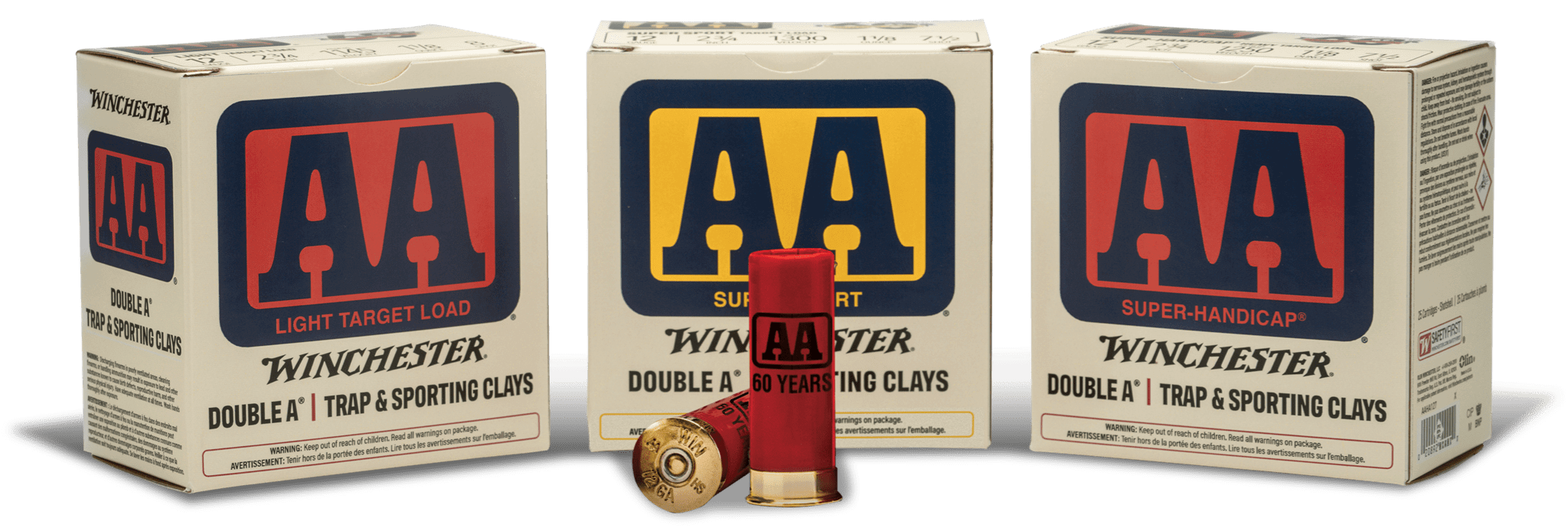How To Make This Your Best Clay Shooting Season Yet
To win a championship title at the Grand American is a feat that few have made reality. Matt has won the Doubles Championship in back-to-back years, and three times in his career.
Hundreds of fellow shooters came to congratulate Matthew Bartholow after notching another incredible accomplishment. He just stepped off the line after winning the 2022 World Doubles Championship at the Grand American World Trapshooting Championships put on by the American Trapshooting Association in Sparta, IL. This shoot is the largest event of its kind. It attracts shooters from all over the world, spanning several days with more than 20 events to compete in. To say Matthew was brimming with emotion was an understatement.

To win a championship title at the Grand American is a feat that few have made reality. Matt has won the Doubles Championship in back-to-back years, and three times in his career. Some would say he’s made winning look easy, but Matt would say otherwise. He puts in the work, the time, the dedication … and he wins. Because of this, he’s one of the most decorated sport shooters in the country.
As his brother, I know Matt all too well but in prepping for this article I still wanted to take a deep look at his approach to the game of clay shooting and perhaps find a tip or two which may help you become a better shooter…be it competitive or just for fun. I know you will enjoy this interview with champion sport shooter, Matt Bartholow (MB):
How did you get to where you’re at in trapshooting?
MB: I follow a very developed plan of what I call “My Shooting Recipe”. In this plan, I have my training, competition, and mental game well thought out and planned prior to each spring. This might be little things like one versus two eye, different hold points, footwork or stances. Whatever it takes to shoot best scores, that’s part of “my recipe”. From there, it's been a lot of training over the years, both on the line and mentally to perfect my method and style. So, it’s best for you, the clay’s shooter, to set a plan/a recipe at the beginning of every season, or before each time you shoot.
What goes into shooting doubles?
MB: There are a couple main ways of shooting doubles; tracking and spot-shooting. When tracking a clay target, start with a low hold point and work up once the target is in view. When spot-shooting, start with the hold point on the path of the first clay target. Once the bird comes out and reaches the barrel, pull the trigger and move to the next bird. This is simplified, but timing is critical when spot-shooting. If the hold point is too low, eyes can lock too quickly and the shot is often behind the bird. If the hold point is too high, you’ll be waiting for the target and the second bird is now starting to drop by the time you get to it – or, a missed bird.
There's a fine balance of timing within eye placement, hold points and keeping a smooth swing. The shooter wants his/her hold point to be timed where the bird is seen and the target crushed smoothly, then efficiently make a move to the second target to shoot it before it peaks and starts its descending motion. Think of it this way - a shot at the second clay will resemble shooting a singles target.
What do you shoot for ammunition? Is there a certain mix you like to use for first and second shots?
MB: Throughout all my doubles championships and shooting career, I’ve chosen Winchester AA Ammunition. There's a lot that can be said about the proven performance and reliability of these shells. The AA is truly the softest shooting, most consistent shell out there. They will leave targets hanging in a black dust cloud. Personally, I find the difference between going home with a trophy in hand (or not) can be the difference between one target hit throughout the competition or shoot off.
I have found a mix of AA light 8’s for the first shot. This gives me less recoil and muzzle jump on the first bird where speed and timing to the second bird matters. Then, the second bird is getting hit with a tried-and-true load of AA Heavy 8’s, which have 1 1/8 ounce of the hardest hitting shot. They simply disintegrate targets. I use a combo of an improved/modified choke for my first shot, then a full choke for my second shot.
What’s a typical day of competitive shooting like for you, and are there any other pointers you can share with us?
MB: I could go on for hours about everything doubles, but to keep this interview relatively short, let’s go through a competition day routine for me and how I make it all work – I begin planning for the day ahead the night before. While on the road, I try to eat consistently so there are no issues. I try to stay hydrated. Each day when I wake up, I start drinking fluids right away.
Next up … breakfast, and some reading to get my eyes warmed up and stretched. I know brother Foster does some muscle stretching which helps him get ready for the event also. I typically will get my gear ready the night before. If my guns need cleaning, that will be done the day before as well so I’m not rushing in the morning. I show up to the shooting bank 30-40 minutes before we are up to shoot. I follow a “warm up” music routine that allows me to calm my nerves, focus and get ready for the event. After this, Foster and I go out and watch targets to make sure height, distance and angles are correct and understood.
When I get up to shoot, I try to block as much as possible out and focus on getting my eyes in the correct spot, my gun mount right, and ensure everything is set before calling for a bird. I will get my hold point set and bring my eyes down, focusing them just above the trap house to see the target more efficiently when it comes out of the house. From there, I follow the bird to my barrel, pull the trigger and start moving instantly to the second target. If I get hung up on how hard I hit the first bird, my timing can be off for shooting the second consistently. I try to remember to not worry about the first bird and just get after the second. Once I get to the second bird, it should be like a singles target. Whenever I do miss a target, I have to remind myself to not get down – it’s all part of competing and all part of shooting.
There you have it, hopefully some insights on how to have your best clay shooting season yet. From champion Matthew himself to you, “Good luck this summer and I hope to see you at the trap range! Keep crushin’ targets!”




